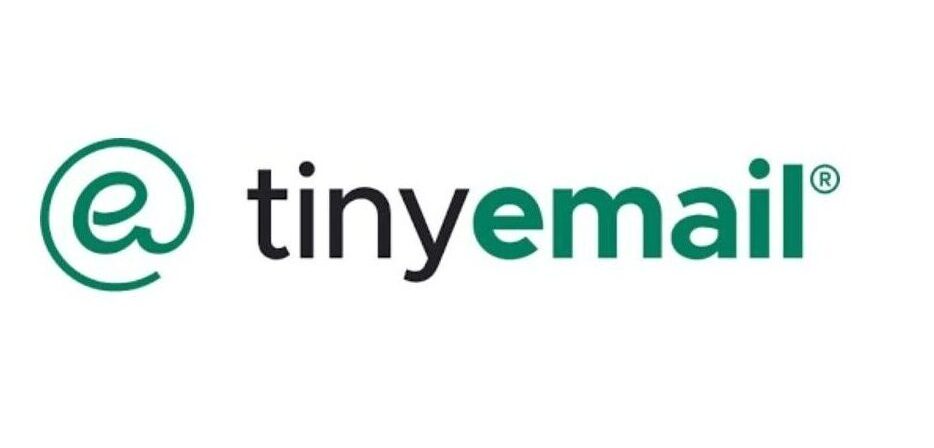The winner – MailPoet
Basic
In this comparison, MailPoet wins six out of eleven rounds. One round ends in a tie, and there are four aspects in which tinyEmail outperforms MailPoet. Continue reading to learn about the instances where MailPoet surpasses tinyEmail and why.
What Mailchimp features are better than Mailerlite
- Automation capabilities
- Signup forms and landing pages functionality
- Segmentation features
- Analytical insights
- Minimal marketing automation features
- Limited signup form builder
- Segmentation features are reserved for higher plan users only
- Basic analytics
- Incompatibility with other marketing channels
Email marketing is one of the most effective ways to reach your customers. It helps you build trust and convert leads into loyal customers. Discovering the perfect tool that aligns with your business needs could have outstanding results.
MailPoet and tinyEmail are excellent email marketing tools with extensive features.
MailPoet, a well-established WordPress plugin, was launched in 2011 in France. In contrast, tinyEmail is a relatively new tool that was established in 2020.
Both tools target small businesses and those working on a tight budget. Which of the two can provide the most value for your business in 2024? MailPoet or tinyEmail?
In this in-depth MailPoet vs tinyEmail review, we’ll compare both tools. We’ll compare their features and pricing models to help you make an informed choice.
Let’s get started!
MailPoet vs tinyEmail: Quick overview
MailPoet and tinyEmail are both great tools to add to your marketing arsenal. While they share similarities in their offerings, their distinctive characteristics set them apart.
MailPoet offers a user-friendly interface. It suits bloggers, small businesses, and email marketing beginners on a budget. It has 700,000+ active installations and 5-star ratings on WordPress.
Conversely, tinyEmail is renowned for its simplicity and ease of use. It is suitable for new ecommerce users, particularly those using Shopify. With an impressive 4.7 stars out of 5 in the Shopify App Store, the software is highly rated among users.
Here’s a table highlighting a quick overview of the key features of MailPoet and tinyEmail.
It is evident that both platforms provide essential email marketing features. However, tinyEmail’s generative AI tool functionality surpasses MailPoet.
MailPoet vs tinyEmail comparison: Feature by feature
In this section, we’ll conduct an in-depth comparison of tinyEmail vs MailPoet. We’ll analyze their features to uncover the strengths and weaknesses of each platform. The comparison will help you decide the most suitable tool for your unique business needs.
Let’s get started.
Ease of getting started
Getting started on both the MailPoet and tinyEmail email platforms is pretty straightforward.
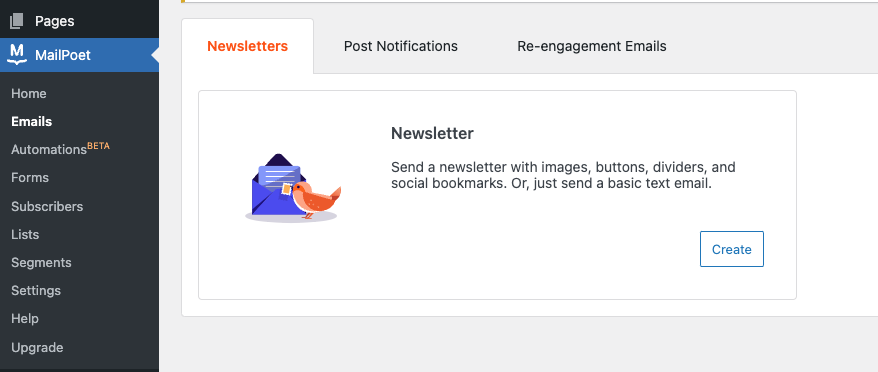
MailPoet WordPress plugin
MailPoet is a WordPress plugin. This means that you need to download it from the WordPress plugin library and activate it. You must answer five standard questions about your business and contact list to set up your account.
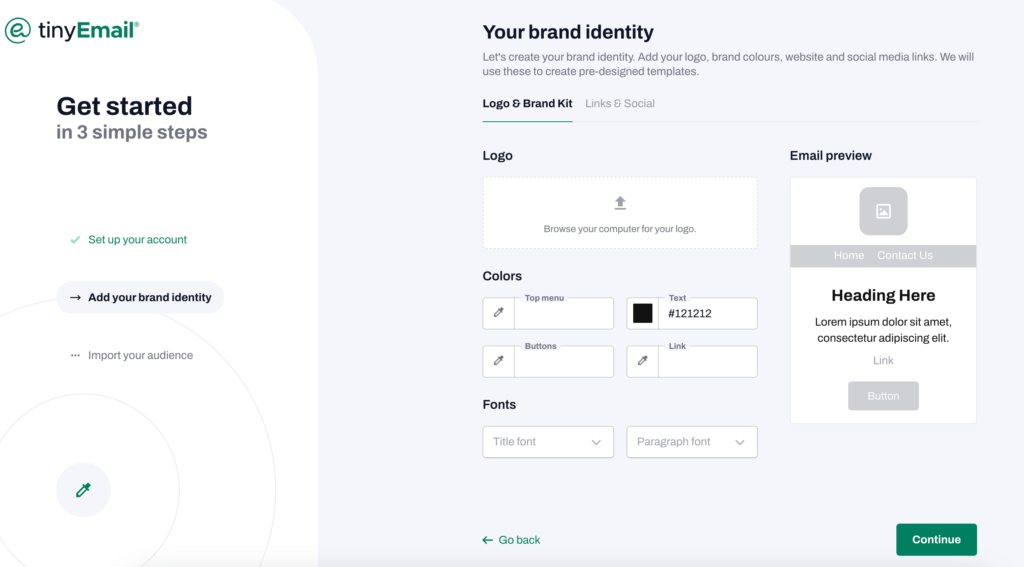
tinyEmail account set up
tinyEmail’s signup process is a little more stringent than other email services. You’re asked to upload a logo and choose brand colors. It also requires you to provide business and personal data, such as credit card information.
Both MailPoet and tinyEmail offer accessible features. These essential features include changing the sender’s email address and verifying accounts.
Locating these settings is a breeze on MailPoet, especially if you’re familiar with the WordPress layout. However, users looking for an independent email solution might encounter slight difficulty when navigating MailPoet.
tinyEmail, on the other hand, offers a smoother verification process. All the necessary settings are easy to locate and change, much like Omnisend and MailerLite.
It’s a draw.
Building an email campaign

MailPoet email editor
Both tinyEmail and MailPoet have intuitive email campaign wizards. However, MailPoet has no button for adding emojis or AI suggestions. This feature is lacking.
Concerning the builder itself, MailPoet’s interface is intuitive. However, it appears somewhat basic. The builder offers standard and dynamic content blocks but lacks interactive features. For instance, it still needs features like image carousels, dynamic recommendations, or coupons.
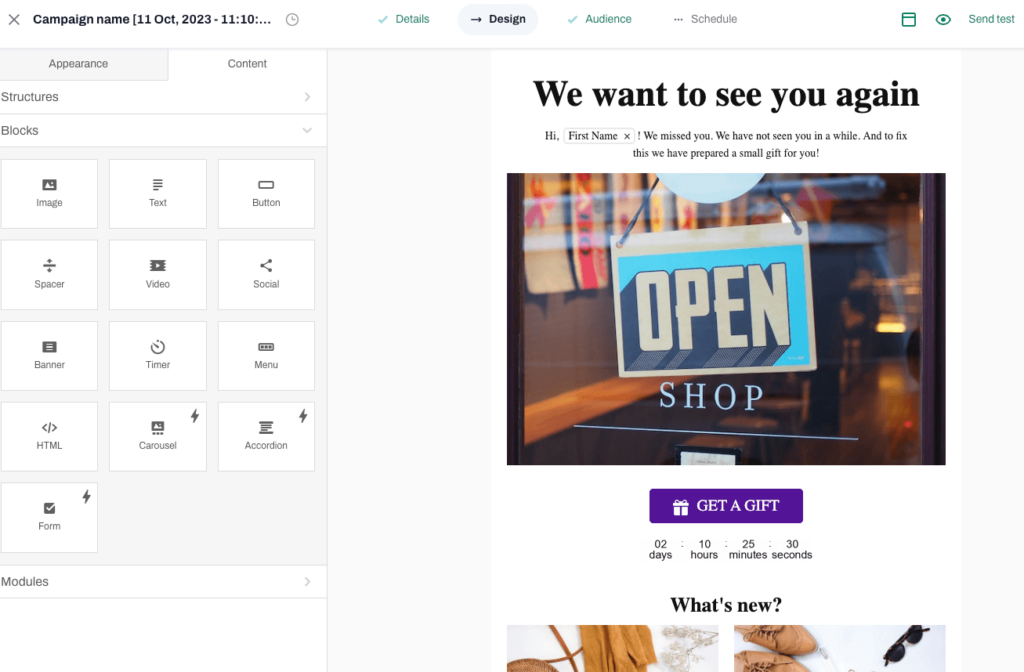
tinyEmail email editor
In contrast, tinyEmail’s builder is much more flexible, offering myriad options. This includes a timer, an image carousel, an easy editing process, and a stock image library. What’s more, its AI text generator gives it even more functionality. The text generator allows for quick and creative email copy production. But we have to make it clear – AI assistance is available only for Shopify users.
However, we have observed that the processes for creating smart elements and product cards are also limited. These are critical areas that could be improved upon.
tinyEmail surpasses MailPoet in terms of templates. It offers a wide selection of 300+ templates, whereas MailPoet only provides a limited range of 50+ templates.
For email types, MailPoet allows for regular newsletters and some automation campaigns. tinyEmail offers the same.
Finally, MailPoet automatically offers users the latest content. This is ideal for bloggers but serves little to no utility in ecommerce. Conversely, tinyEmail doesn’t showcase any unique email-building features.
tinyEmail wins this round. Its robust email template offering, AI text generator, and aggressive growth strategy put it ahead of MailPoet.
Marketing automation
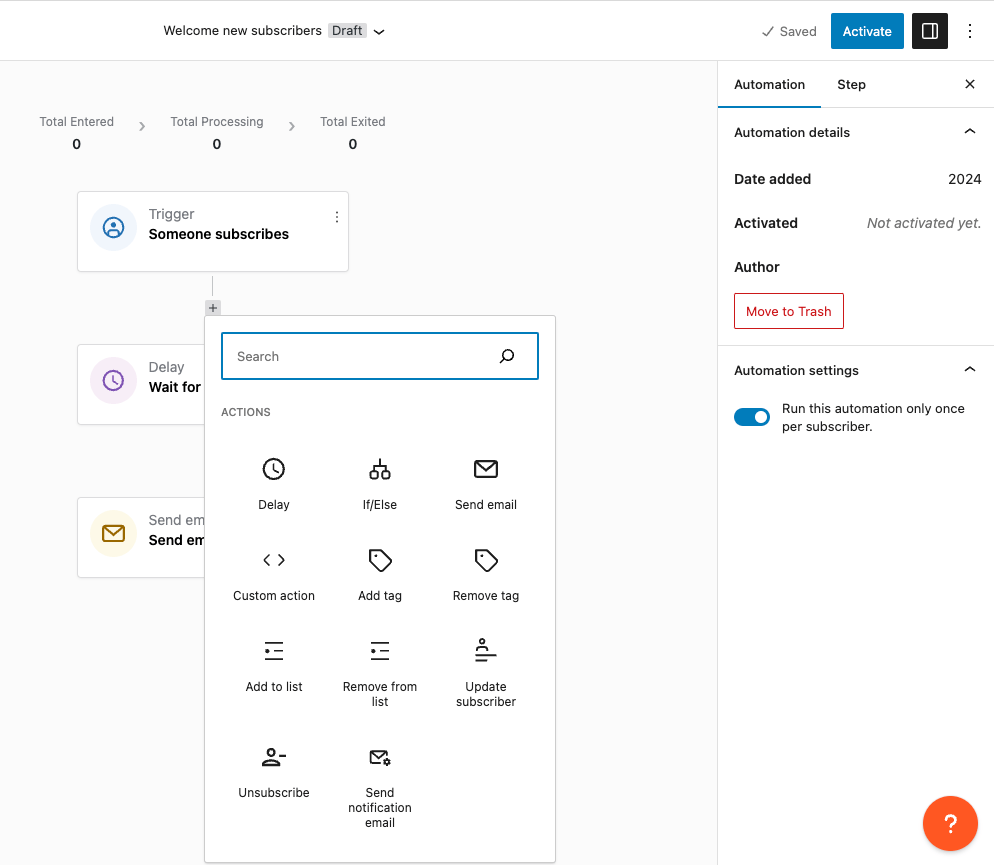
MailPoet automation
Regarding marketing automation, MailPoet has a straightforward and user-friendly automation builder. It’s rather basic and is similar to the automation builders offered by other email providers.
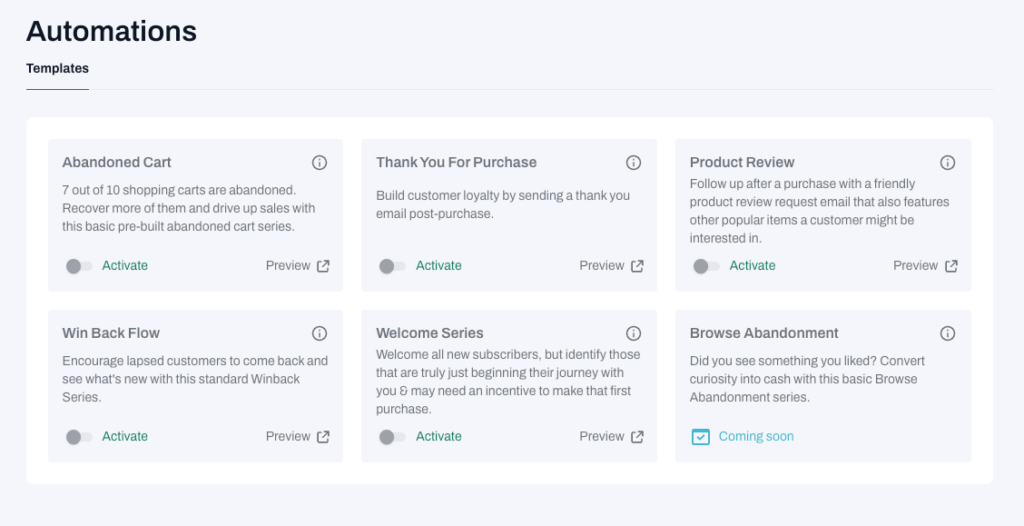
tinyEmail automation
On the other hand, tinyEmail’s automation features are more modest and basic. Its available workflows are limited to only Shopify users. Woocommerce users can send welcome automation only. Additionally, there is no flexibility for logic or copy edits.
Meanwhile, both platforms offer prebuilt automation workflows. They both offer automated welcome email templates and automated abandoned cart emails. They also offer automated templates for product reviews and re-engagement.
It’s important to emphasize that tinyEmail’s prebuilt automation only works with Shopify.
Speaking of integrations, we discovered that both platforms fall short when it comes to integrating other marketing channels. They both limit users to email-only workflows.
MailPoet wins this round. Although tinyEmail has potential, we’ll argue that MailPoet surpasses it in automation capabilities.
Signup forms and landing pages
Lead generation for a business often hinges on the aesthetics and functionality of your signup forms and landing pages. tinyEmail and MailPoet understand this and offer unique approaches to this area.
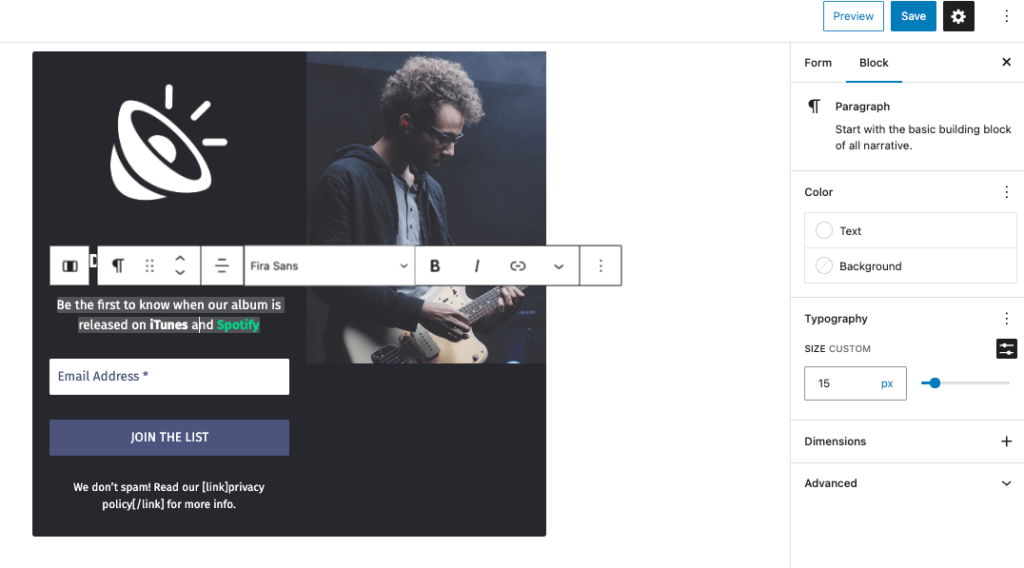
MailPoet form editor
Our evaluations show that MailPoet stands out by providing prebuilt signup forms. It also offers five types of forms and ten designs for each prebuilt signup form.
They include the following:
- Popups
- Widgets
- Slide-ins
- Fixed bars
- Below-pages
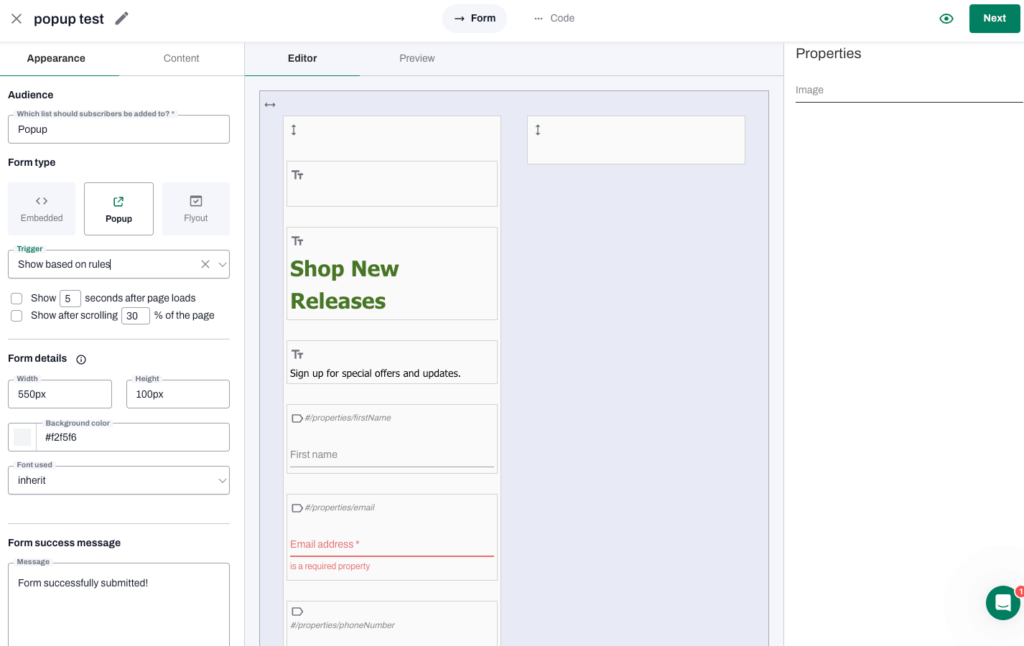
tinyEmail signup form builder
tinyEmail also offers pre-built signup forms with a library of templates. It offers the following:
- Embedded forms
- Popups
- Flyouts
However, we discovered that MailPoet’s form builder is quite basic. It offers a range of essential functions and diverse settings for customizing the design of forms.
tinyEmail’s form builder looks great but is riddled with many limitations. The editor might find it difficult to customize the form builder to adapt to specific brand colors.
Surprisingly, both tools lacked analytics for signup form performance. During our assessment, we discovered that neither MailPoet nor tinyEmail provides landing page functionality for users. This is a big drawback compared to other field players.
Managing subscribers’ lists is easier with MailPoet. It utilizes tags for easy organization. In contrast, tinyEmail offers insights into audience composition, but some limitations exist.
MailPoet wins this round. MailPoet has some limitations and drawbacks in its signup forms and landing pages. However, it still offers more options and functionality than tinyEmail.
Segmentation
tinyEmail vs MailPoet: which tool provides better segmentation features?
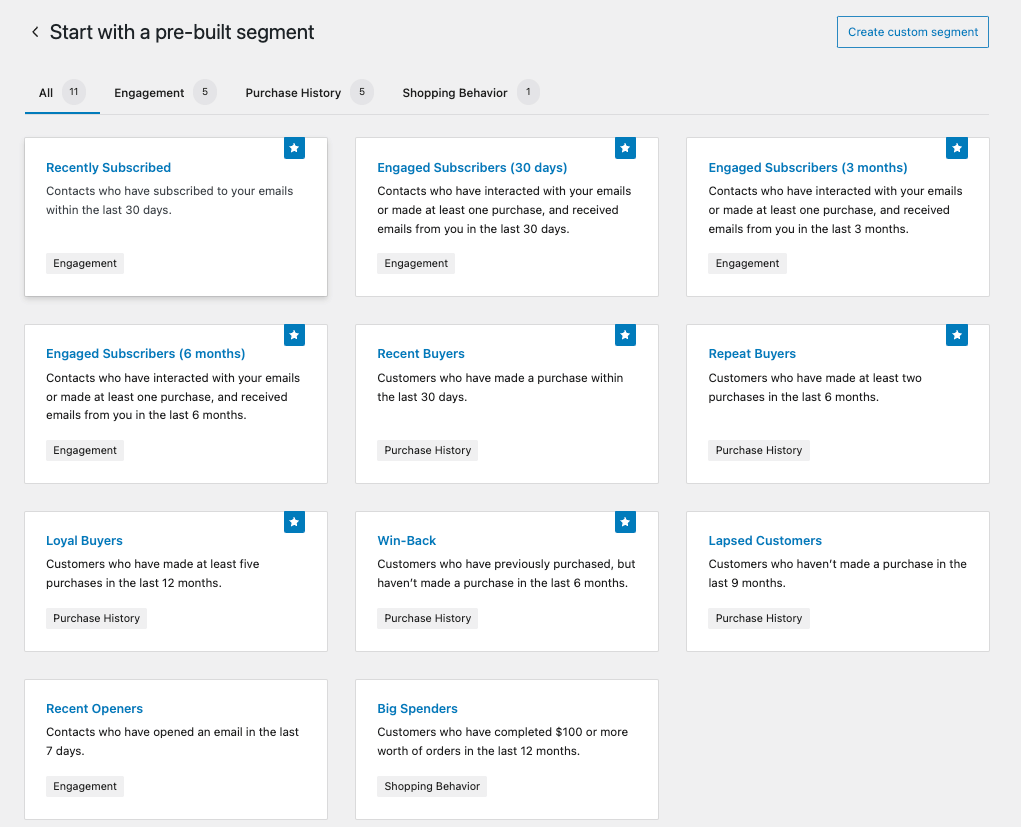
MailPoet segmentation
For starters, MailPoet offers 11 ready-to-go segments. It caters to various aspects, including:
- Engaged subscribers
- Recently subscribed
- Lapsed customers
- Recent openers
- Repeat buyers
- Recent buyers
- Big spenders
- Loyal buyers
- Win-backs
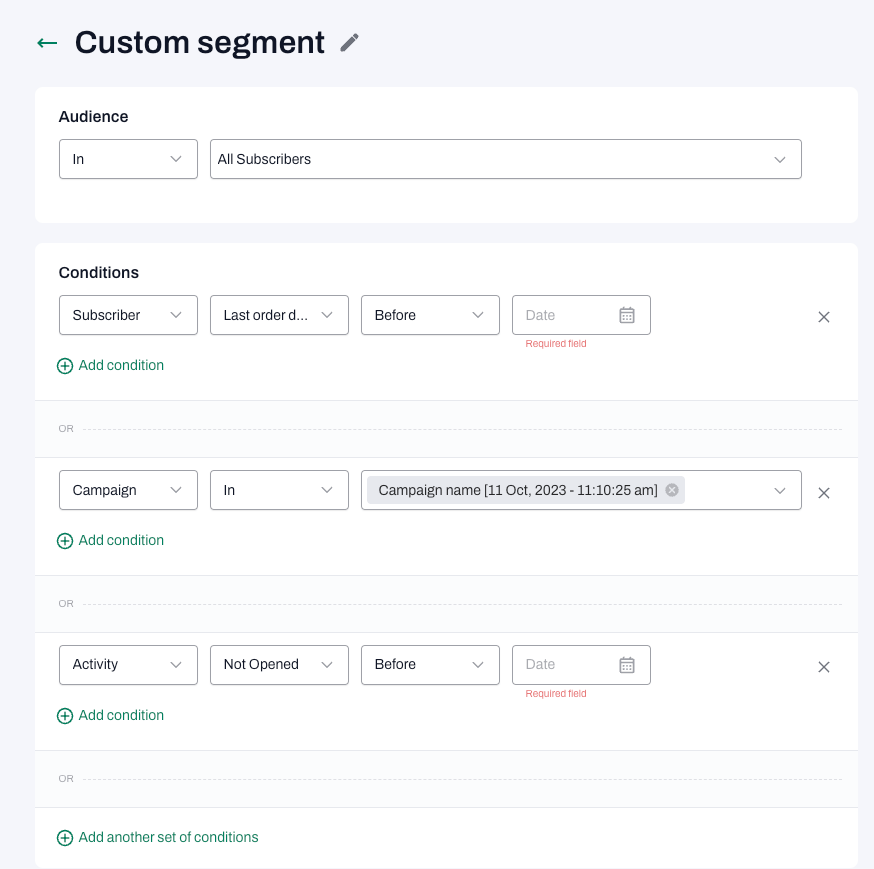
tinyEmail segmentation
tinyEmail, on the other hand, offers 15 predefined segments for various business cases. However, you can only access four of these segments on the Standard plan. The other 11 segments are only available to Pro Plan subscribers.
In addition, segmentation on tinyEmail is a bit basic. The platform only allows users to segment their audience based on email engagement activity and customer profile information. We missed on-site behavior, segments based on tags, and ecommerce-oriented criteria.
MailPoet’s segmentation is better but more suited for email beginners. Advanced marketers seeking more nuanced segmentation options might find it limiting because it needs on-site behavior criteria.
MailPoet wins. Unlike MailPoet, tinyEmail’s segmentation features are minimal and basic. Plus, they are reserved only for higher plan users.
Analytics
Both MailPoet and tinyEmail provide insights into campaign performance. However, the analytics offered by both tools differ in depth and comprehensiveness.
MailPoet has a comprehensive set of analytics features. It allows users access to statistical reports for:
- Newsletters
- Welcome emails
- WooCommerce
- Standard email metrics (such as open rate, click rate, and clicked links)
It’s important to note that MailPoet doesn’t provide comprehensive sales reports, real-time analytics, or geolocation reports. It restricts the extent of accessible insights.
We discovered that tinyEmail only offers basic analytics. It focuses mainly on email activity metrics like open, click, and delivery rates. Unlike MailPoet, tinyEmail provides a trend analysis of email campaign performance. It also provides Shopify users with a workaround to track sales.
However, tinyEmail also falls short in providing geolocation reports and real-time analytics. It also misses the opportunity to provide ecommerce insights such as orders, revenue, and detailed signup form analytics.
Both platforms need to improve their reports. However, MailPoet offers slightly more insights.
Customer support
tinyEmail or MailPoet, which tool has the best customer support features?
Let’s discuss MailPoet’s customer support. The tool provides priority email support to only customers with paid subscriptions. The platform claims to have a targeted response time of 48 hours with its contact form.
On the contrary, tinyEmail offers better support accessibility by catering to free and paid plan users. This tool offers round-the-clock (24/7) customer support through chat, email, and phone to users on paid plans.
Regarding resources and tutorials, MailPoet boasts a robust knowledge base enriched with educational videos. tinyEmail doesn’t hold back in this area either, as it offers onboarding calls and online resources. However, its resources are not as comprehensive as some other platforms.
tinyEmail wins this category. It trumps MailPoet in support options and response time, making it the better customer support choice for 2024.
Integrations
Regarding integrations, MailPoet falls on the short end of the spectrum. MailPoet is tailored for WordPress and WooCommerce. It focuses on deep integration with this ecosystem.
In contrast, tinyEmail boasts a much larger integration basket. tinyEmail’s integrations encompass:
1. Migrations from other email marketing services:
- Campaign Monitor
- Constant Contact
- Mailchimp
- MailerLite
- Klaviyo
- Drip
2. Integrations with ecommerce platforms:
- WooCommerce
- Magento
- Volusion
- Shopify
tinyEmail integrates seamlessly with payment gateways like PayPal and Stripe. It also integrates with CRM platforms like QuickBooks and HubSpot. Connectors and form tools are not left out.
tinyEmail is the clear winner in this category. It provides more integrations than MailPoet.
Compatibility with other channels
Are you looking for a tool compatible with other marketing channels? Should you go for tinyEmail or MailPoet?
MailPoet offers limited compatibility with other marketing channels. Users looking to expand their reach beyond email can only do so through Zapier.
tinyEmail doesn’t fare any better. Its roadmap shows that it is working on adding SMS functionality. However, tinyEmail remains exclusive to email and is incompatible with other marketing channels.
MailPoet wins this round. Both platforms lack compatibility with other marketing channels. However, MailPoet’s Zapier support gives it a minor advantage over tinyEmail.
Generative AI tools
Generative AI has become a disruptive force for email marketing service providers.
As of our evaluation, MailPoet has no generative AI tools. Conversely, tinyEmail offers generative AI with “tinyAlbert.”
tinyAlbert is a brand-new in-house product that leverages GPT-4 AI exclusively for Shopify businesses. tinyAlbert automates email marketing tasks and offers AI-driven assistance.
tinyEmail wins by default. MailPoet’s lack of generative AI capabilities makes it easy for tinyEmail to win this category.
Price comparison
When selecting an email tool for your marketing needs, pricing is another critical factor to consider. Ensure the tool you choose aligns with your budget and offers value for your money.
In this section, we’ll compare MailPoet vs tinyEmail pricing plans. We’ll explore the free and paid plans and the features available on both plans.
Free plans comparison
In the comparison table below, we’ve briefly detailed the MailPoet vs tinyEmail free plan offerings:
- Send up to 5,000 emails to 1,000 subscribers monthly
- Subscription forms
- Summarized email engagement statistics
- Basic marketing automation
- Automated welcome emails for new subscribers
- Customer support through WordPress forum
- 50+ pre-built, customizable email templates
- Subscriber engagement scores
- Send up to 15,000 emails to 500 subscribers monthly
- Subscription forms
- Campaign analytics
- Limited AI subject line assistant
- Limited sender identities
- Automation emails
- Limited premium templates
- Dedicated IP
Paid plans comparison
Let’s briefly compare the tinyEmail vs MailPoet monthly paid email marketing plan:
MailPoet presents itself as the more cost-effective alternative. However, it gradually becomes more expensive as the number of subscribers increases. Conversely, tinyEmail’s price increases in tandem with the number of subscribers.
MailPoet is slightly more appealing for smaller businesses on a tight budget. The MailPoet Creator plan is also a more cost-effective option. The MailPoet Creator plan offers all the Business Plan features without the MailPoet Sending Service.
Meanwhile, tinyEmail offers a Shopify Pro plan at no cost. This plan provides even more features than its Standard package. On the other hand, the tinyEmal Enterprise plan is perfect for bulk email marketing campaigns and comes at custom pricing.
Ultimately, the decision between tinyEmail or MailPoet depends on your specific needs and budget. This is particularly true if price influences your decision.
Summary: which one wins?
Let’s look at a full recap of what we’ve learned so far.
3.0
3.3
- 500 subscribers – $10
- 1,000 subscribers – $20
- 5,000 subscribers – $55
- 10,000 subscribers – $80
- 50,000 subscribers – $290
- 100,000 subscribers – $550
- 15,000 emails – $15
- 25,000 emails – $25
- 50,000 emails – $50
- 100,000 emails – $100
- 250,000 emails – $250
- 500,000 emails – $500
- Up to 1,000 subscribers
- Up to 5,000 emails per month
- 50+ email templates
- Good email and form editors
- Popups and other signup forms
- Welcome email and a few more automated emails
- Newsletter scheduling
- Tags for segmentation
- Basic email engagement statistics
- Up to 500 subscribers
- Up to 15,000 emails
- Forms and popups,
- Automation emails
- AI subject line assistant
- Limited sender identities
- Easy to use
- Offers all necessary functions for beginning
- Affordable
- Easy to signup and use Good email builder
- An extended list of email templates
- The analytics are overly simplistic
- Doesn’t offer occasion-ready templates for ecommerce
- No Generative AI assistance
- No live chat support
- No landing pages
- Basic automation and reporting
- Pretty basic segmentation
- Form builder should be improved
- WordPress and WooCommerce users
- Bloggers
- Startup owners
- Very beginners
- Shopify users
- Small ecommerce businesses and email marketing beginners
- Bloggers
- Non-profit organizations
- Established ecommerce businesses
- Established solopreneurs
- Established ecommerce businesses
So, which email marketing tool takes the crown: MailPoet or tinyEmail?
From our comprehensive analysis, tinyEmail is a superior choice compared to MailPoet. tinyEmail’s far-reaching integrations, hands-on customer support, and incorporation of a GPT-4 generative AI tool position it as a more versatile and feature-rich solution.
Of course, MailPoet is not a pushover either. Its ecosystem-specific approach makes for thorough specialization. This should come in handy for WordPress and WooCommerce enthusiasts.
However, tinyEmail’s broader functionalities make it a better choice for a diverse audience. This includes solopreneurs, marketers from small ecommerce businesses, and bloggers.
Overall, both tools have their respective shortcomings. Their signup forms and landing pages, analytics, and compatibility with other marketing channels are lacking in many aspects. If you’re in search of better alternatives, check out these articles:
Read full reviews
Related picks for you
Our team strives to be accurate and unbiased in reviewing email tools. However, we recognize that mistakes can happen, and it’s essential for us to stay up to date. If you come across any errors or things that need to be reviewed again, please let us know.

